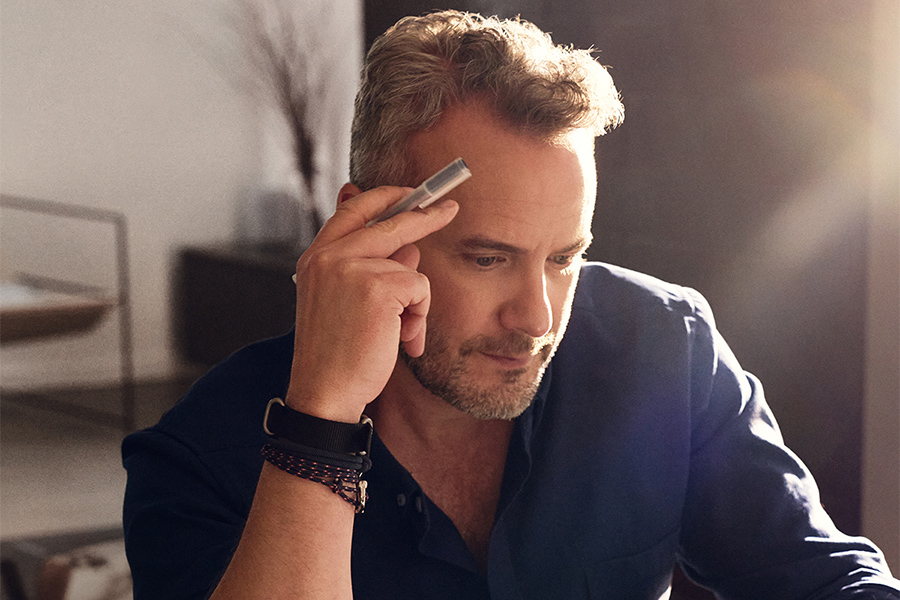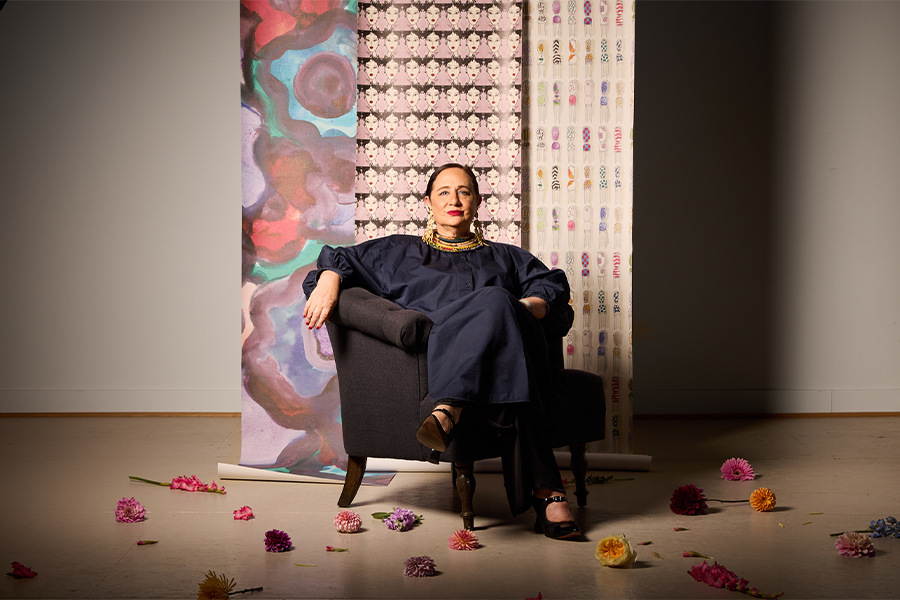Brothers Scott, Kenny, and Rande Gerber have found a desirable niche—accessible F&B outposts that offer great service, high design, and, most importantly, a place to unwind after a long day. It’s this philosophy that has helped them reinvent the hotel bar, thanks in part to an early mentorship from Ian Schrager and a longterm relationship with W Hotels.
Scott, Gerber Group principal and CEO, got his start in real estate finding high-end couture brands, including Armani and Dolce & Gabbana, brick and mortar spaces in some of the most coveted zip codes. But it was the opening of the Whiskey with Schrager at the Paramount Hotel in 1991 that changed his course, spearheading an innovative F&B operator with a few more tricks up his sleeves—from translating the bar into a catchall space that functions as a social hub and work area, to introducing new concepts like bottled cocktails into the mix. Today, 10 bars and restaurants span New York, Los Angeles, Miami, Atlanta, and Santiago, Chile; Washington, DC is on Gerber’s radar, as are more spots in New York. “We’re opportunistic,” he says. “We like to partner with people who have the same goals and objectives as we do. We’re not going to go into a brand that we can’t add value to.”
Here, Gerber talks about reviving a New York icon, striking the right balance between design and function, and his secret to success.
Why were you interested in restoring the Campbell Apartment alongside designers Tony Ingrao and Randy Kemper?
It’s such an iconic New York bar that we decided to bid on the proposal, and we were awarded it. Then we undertook the restoration. The physical space itself is spectacular. We didn’t appreciate the beauty of the ceiling because it was always so dark, which detracted a lot from what the space was. We really just refreshed it. We changed the bartop, put in new lighting, a new sound system, new air conditioning, new carpets, and all new custom furniture.
Our approach is that we’re very inclusive. [The past owners] wanted it to be this secret, quiet, out-of-the-way place that many people didn’t know. To us, it’s such a spectacular New York venue that we want everybody to know about it and appreciate it. We’re being more forward in telling people where it is. I have a lot of friends that commute through Grand Central every day and had no idea it existed.

The iconic Campbell Apartment in New York’s Grand Central, which Gerber Group and designers Tony Ingrao and Randy Kemper recently restored to its former glory.
You recently opened Lower East Side hotspot Mr. Purple. Tell us about your first project with the Indigo hotel brand.
With the space being on the 15th floor with the views that it has, we took the approach of less is more. It was very specific that we put the bar on the window, so the backbar is the window line. We felt like people would want to stand at the bar and look out at the beautiful views.
[Brooklyn, New York design firm] Crème [has] that Brooklyn grittiness, and we wanted to take this modern, new building and make it fit within the neighborhood and create an artist’s loft. We didn’t overdo the interior, so we went with cement floors, timber beams, street art by [artist] Lee Quinones, and eclectic furniture.
Are you as involved with the design of your venues as operating them?
We are 100 percent involved in the design from the beginning. We want to be complementary to the hotel, but we don’t want to be the hotel bar. We don’t want it to look like it’s just another room in the hotel. What’s important to us is the functionality and the operational part of the bar. It’s great to build a pretty bar, but if it doesn’t work and you can’t get the drinks out quickly and your service station isn’t in the right place, that pretty bar usually becomes somebody else’s pretty bar.

Collaborating with Brooklyn firm Crème, Mr. Purple’s stellar views of the New York City skyline enhance the Lower East Side-inspired design of cement floors, timber beams, and street art.
Do you think about your start with W Hotels and how it helped you redefine the hotel bar?
It really goes back way before that to the first bar we opened with Ian Schrager, the Whiskey [in the Paramount Hotel]. That was the start of the cool bar in a hotel [trend]. Before that, nobody was going to bars in hotels unless you really needed a drink and were staying in that hotel. We did SkyBar in LA with [Ian], and that’s how we ended up in LA. We did the Sunset Marquis in LA, and in my prior life, I was a real estate broker for Giorgio Armani. He had restaurants in his boutiques that were in Boston, San Francisco, Orange County, California, and New York, and so we took over management of all those. With W, it was really about Barry Sternlicht coming and saying, ‘Do you want to partner with us and do this?’ And then he just started banging out hotels all over the place: New Orleans, Atlanta, Chicago—we were opening three or four a year.
How did your relationship with Schrager begin?
My brother Rande followed me into [real estate] and one of his clients was Ian. Rande was the broker for the Paramount Hotel, and at the time [nearly three decades ago], Ian was looking for a bar to open, and so my brother brought him to every cool bar in New York. Ian knew he didn’t want [to run] another bar in his property, so he said, ‘You guys seem like good guys, why don’t you do the bar, and I’ll show you how to do it. I can’t own it, but I’ll tell you how to do it, and I’ll bring in the designers.’ That’s how we ended up with Philippe Starck and David Rockwell, and he basically coached us on how to do this bar and helped curate it with us.
We opened the doors to the Whiskey as a 900-square-foot bar, and people who used to hang out at Studio 54 were coming to this cool little bar. Neither of us were married at the time, and we figured if worse comes to worst, we’d be drinking for free. We weren’t thinking about the money we were investing. We did it, and it was a huge success.

The Roman and Williams-designed Kingside, located in the Viceroy New York, embraces a casual interior with a black and white graphic palette juxtaposing caramel leather banquettes and rich red barstools.
Do you miss those days?
A little bit. I was on a plane basically every week, but it was fun. There was a time where we had 40 bars, and it’s like having too many kids: You can’t spend enough time with all of them. Now we’re more focused on making sure the opportunities we decide to do are things that we can dive into and that will be really successful. We are making more now with fewer bars and restaurants than when we had more. We want to focus on what we really enjoy.
What’s your secret to success?
At the end of the day, the differentiating factor has to be the people who work with you, and we’ve been fortunate to have great people that have worked with us for a long time. I have barbacks and bussers who have worked with us since day one, whose kids work with me now. That’s a great testament. I look at work as family. We treat everybody as family and as we want to be treated. That’s been the key: being able to retain a lot of great people in a business that typically is hard to retain people.


